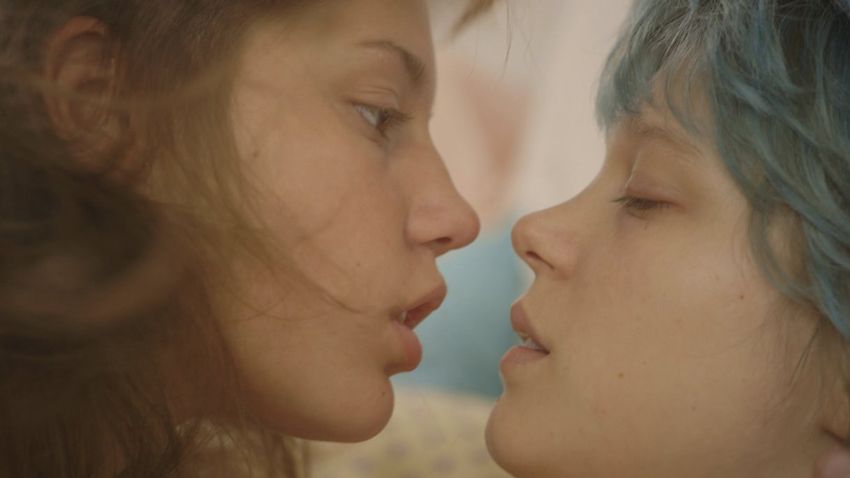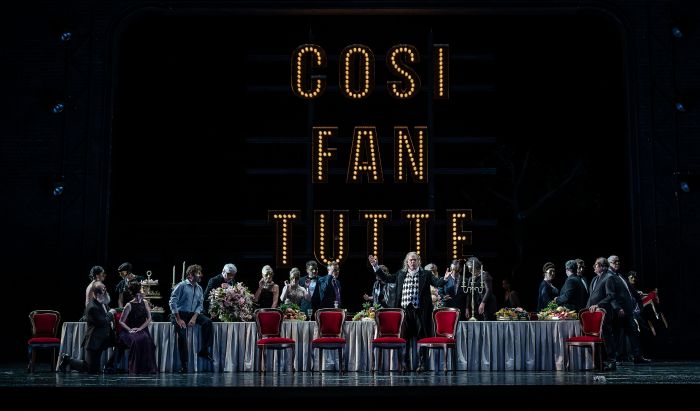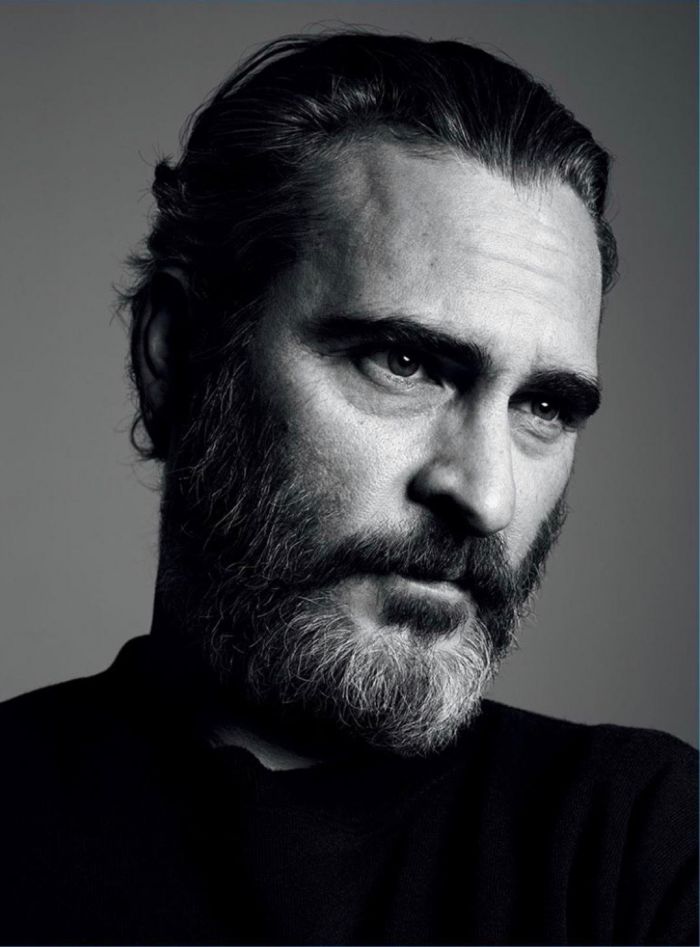
Ever since the film adaptation of Fifty Shades of Grey was announced, fans have been losing their minds over just how sexy the movie will be (newsflash, they want it really sexy). Last year producer Dana Brunetti voiced his interest in making two versions of the movie, one R-rated and one NC-17 — though now it seems that the film will be sticking with R. The buzz and controversy around the highly anticipated bondage flick made us think back on past mainstream titles that were almost too sexy for R— and some that definitely were.
Most of the time, an NC-17 rating is a death sentence, because it means the movie isn't going to be getting the same distribution an R-rated flick and it places the movie in the same arena as pornography (even though the rating was originally created to set movies apart from those X-rated films). There are exceptions of course, like The Dreamers (which made $2.5 million in its US theatrical release) and Blue is the Warmest Color (which blew critics away at film festivals), but those are all pretty recent. Generally, a film has to make some serious changes to get the rating dropped to an R if the studio wants people to actually see it. Some of these titles may not seem like a big deal now, but they definitely pushed boundaries at their time of release.

Last Tango in Paris (1972)
This flick directed by controversial Italian filmmaker Bernardo Bertolucci (look for him again farther down this list) definitely got hit with an X rating when it was released in the United States, even after the most graphic scene was cut. Telling the story of a grieving widower (Marlon Brando) and his sexual experimentation with a Parisian woman he meets (Maria Schneider), Last Tango in Paris is an intense look at how people use sexual encounters as a way to escape their reality.
With so much focus on the sex scenes, people often forget that it's actually a great movie and a fantastic role for Brando (maybe one of his best after The Godfather). At the time the film was made, Bertolucci voiced many times not finding the actual sex in the film to be most provocative, instead it was Brando's wounded performance that the director looked to and I couldn't agree more.
As a method actor, Brando wrote in his autobiography, "Last Tango in Paris required a lot of emotional arm wrestling with myself, and when it was finished, I decided that I wasn't ever again going to destroy myself emotionally to make a movie. I felt I had violated my innermost self and didn't want to suffer like that anymore...Last Tango in Paris left me feeling depleted and exhausted, perhaps in part because I'd done what Bernardo had asked and some of the pain I was experiencing was my very own." In the face of the emotional turmoil and suffering portrayed onscreen, the sex actually takes a secondary role and is only a catalyst. Brando apparently ended up feeling so violated from working on the film that he didn't even speak to the director for years.
Since so many were unsure as to whether to consider Last Tango in Paris a 70s porn film or an art house classic, people loved to talk about it and Italy even banned it. Though the movie may seem anticlimactic now in terms of sexy films, you'll certainly have a hard time looking at a stick of butter the same way ever again — sorry, I had to say it.

Salò, or the 120 Days of Sodom (1975)
Pier Paolo Pasolini was a genius and Salò (which is based on The 120 Days of Sodom by the Marquis de Sade and inspired by Dante's Inferno) was his last film, because he was killed shortly after. Set in Nazi-controlled Salo in 1944 (a northern Italian state), the movie pictures four officers that capture attractive youths to basically be their sex slaves. Because the flick is full of graphic scenes depicting violence, sadism, and sexual depravity (all of which Pasolini used to mimic the effects of capitalism), it was banned in several countries upon release (including Australia for 17 years). It still stands as an incredibly tough film to watch and continues to disturb people on multiple levels — seriously, don't watch it without knowing what you're in for.

In the Realm of the Senses (1976)
This French-Japanese art film by Nagisa Ôshima is a great example of when a film that could easily be thrown to the side as porn is selected to play at esteemed film festivals — the New York Film Festival to be exact. Based on a real murder case involving a maid and her boss (and their sexual appetites), In the Realm of the Senses was so sexy that an actual court case was held to determine whether or not it was smut or art — this probably had something to do with the fact that the sex scenes weren't simulated. Art won in the end and it’s now considered to be the first non-pornographic film that shows fellatio.

Henry & June (1990)
Henry & June stands as the only film with an NC-17 rating to be nominated for an Oscar (Best Cinematography) and it was also the first mainstream movie to get that newly created rating — which was apparently given because of an erotic postcard shown at the beginning of the film. Based on the book by Anaïs Nin, it tells the story of Nin's (Maria de Medeiros) relationship with Henry Miller (Fred Ward) and his wife June (Uma Thurman) in 1931 Paris. The sexuality in the film is actually pretty tasteful and isn't over-the-top by any means, but that didn't stop newspapers from refusing to even run an ad for it.

Basic Instinct (1992)
We all know about Sharon Stone's famous leg-crossing scene, but that's not the only reason Basic Instinct was originally going to be given NC-17. Director Paul Verhoeven had a feeling the violence and sex in the film (particularly the oral sex scene) may give the MPAA pause, so he took 10 days to complete the big sex scene between Stone and Michael Douglas, shooting tons of extra footage and alternate close-ups. Thankfully, when it was time to hit the editing room, Verhoeven had complete freedom to create a scene that satisfied the MPAA and didn't have to cut it altogether.

Crash (1996)
If you haven't seen Crash, the premise alone tells you all you need to know about why this one was given an NC-17 rating by the MPAA. Directed by David Cronenberg and based on J.G. Ballard's novel of the same name, the movie is about a man (James Spader) who has a fetish for car crashes and uses them to rejuvenate his sex life with his wife. Cannes gave it an award for being audacious (no joke) and Ted Turner tried to have it banned from ever being released.

Eyes Wide Shut (1999)
Stanley Kubrick's last film isn't necessarily his best, but it definitely stands out. Starring Tom Cruise and Nicole Kidman (who were a couple at the time), Eyes Wide Shut was originally given an NC-17 rating due to an orgy scene. The MPAA required Warner Brothers to digitally change the scene so that figures wearing cloaks would be inserted in front of the couples having sex. Many film critics found the rating demand absurd because of the film's nature, citing that there's no way Kubrick could make a serious film about human sexuality without the sex and to put it in the same category as pornographic films was insulting to the filmmaker's legacy (the film was released only a few months after Kubrick's death).
This wasn't the first time a Kubrick film was sacked with a steep rating though — A Clockwork Orange originally got X, back before it was linked to pornography. It's since been re-rated to R.

Monster's Ball (2001)
Marc Forster's Monster's Ball is a dramatic film about a racist prison guard (Billy Bob Thornton) who falls in love with the African American wife (Halle Berry) of a prisoner he executed. The sex scene between Berry's and Thornton's characters was too much for the MPAA and after threatening to give it an NC-17, Forster trimmed the scene. The uncut version was shown at the Berlin Film Festival and released in most other countries, while the edited one was released in the US.

Y Tu Mamá También (2001)
Directed by Alfonso Cuarón (Children of Men, Gravity), Y Tu Mamá También is the coming-of-age flick which made Diego Luna and Gabriel García Bernal stars. The plot centers around two teenage boys who embark on a road trip with an older woman (Maribel Verdú) in her twenties. While the girl definitely serves as a sexual catalyst, it's the burgeoning relationship between the two boys that really drives the film to its final group scene — which is what got it the NC-17 rating.

The Dreamers (2003)
In The Dreamers, Michael Pitt plays a young naïve American who ends up living in a flat with twins who are a little too close (played by Eva Green and Louis Garrel) during the 1968 Paris student riots. Directed by Bernardo Bertoluci, this movie is full of seemingly never-ending sex that is simultaneously sensuous and a little threatening. The trio do their best to hide from the world and live within their haven, but of course, the political turmoil outside leeks within their "dreamscape." When this movie was given NC-17, Fox Searchlight made an unusual decision to accept it and release the film as-is, regardless of the possible financial ramifications. It was a good choice since this movie is widely listed as a critic and fan favorite, and served as a career launching point for Michael Pitt.

Lust, Caution (2007)
Ang Lee's Lust, Caution follows a young woman (Wei Tang) recruited by a group of radicals in Imperial Japan-occupied China to capture the heart and assassinate a high-ranking political figure (Tony Chiu Wai Leung). You probably guessed it, but she totally ends up falling in love with him and gets stuck between doing her job and saving his life. Their affair is incredibly physical and Lee never allows the viewer to shy away from the explicit activity on screen — the three sex scenes were all shot over 11 days on a closed set.
Despite being NC-17, Lust, Caution was repeatedly applauded by critics for its beauty and has landed on several "best films" lists. Lee reportedly had Leung study the performances in several movies (including Brando's in Last Tango in Paris) to help him nail the wounded masculinity of his character. The director has also said that the sex scenes were far more difficult for him to shoot than the very complicated fight scenes in Crouching Tiger Hidden Dragon.

Blue Valentine (2010)
This is one of those rare instances where the MPAA was forced to change their ruling because of a double-standard criticism. They wanted to slap Blue Valentine with the more extreme NC-17 rating because of a scene in which the husband (Ryan Gosling) performs oral sex on his wife (Michelle Williams). What upset the public (and Harvey Weinstein) was that Black Swan was released the year before with an R rating, the MPAA having taken no issue with the oral sex between two female characters — a scene which was far more gratuitous. They eventually reversed their rating and Blue Valentine was allowed to stay as is with an R.

Shame (2011)
Shame may have spawned years of jokes about Michael Fassbender's natural endowment, but the movie itself is definitely not funny. Directed and co-written by Steve McQueen (Hunger, 12 Years a Slave), this flick is far from glamorous, telling a stark and sad story about Brandon (Fassbender), a sex addict who realizes just how out of control he is when his little sister (Carey Mulligan) comes to visit.
Fassbender's character moves through a life full of porn (often while at work), prostitutes, and one-night stands, searching for a lasting human connection — when he finally does try to go on a real date, his eventual defeat is heartbreaking. McQueen is a genius when it comes to telling stories through images and sound, known for forcing viewers to confront human pain through incredibly long shots, and this movie really makes you live Brandon's shame. If you think sex addition is funny, this dark film will change your mind with its unsexy sex scenes that are full of desperation and humiliation.
Here's some trivia for you: the scene in which Brandon and a woman have sex against the glass window in Manhattan's Standard High Line Hotel (which is known for its guests engaging in public sex) was really filmed above a busy street full of spectators watching the actors act out the scene — they waved between takes.

Blue is the Warmest Color (2013)
Considered by many to be one of the most honest and genuine portrayals of love seen on film, Blue is the Warmest Color swept independent film festivals and won tons of critical and viewer acclaim (as well as Cannes' Palme d'Or). The movie is basically a coming-of-age tale about a young girl (Adèle Exarchopoulos) who falls in love with a slightly older woman (Léa Seydoux).
As the newest sexy flick to cause controversy, many find the sex portrayed in the French film to be too realistic, which really serves to point out how obsessed with sex people really are. The three-hour film has three really long explicit sex scenes, which earned it an NC-17 and are used to show how visceral sex can be between two people truly in love. Aside from the actual sex, there's a ton of controversy surrounding the film, like whether or not the actresses felt uncomfortable on set. The fact that this tender love story between two women is actually filmed (and co-written) through the eyes of a male director (Abdellatif Kechiche) also brings in the incredibly complicated issue of the male gaze.














